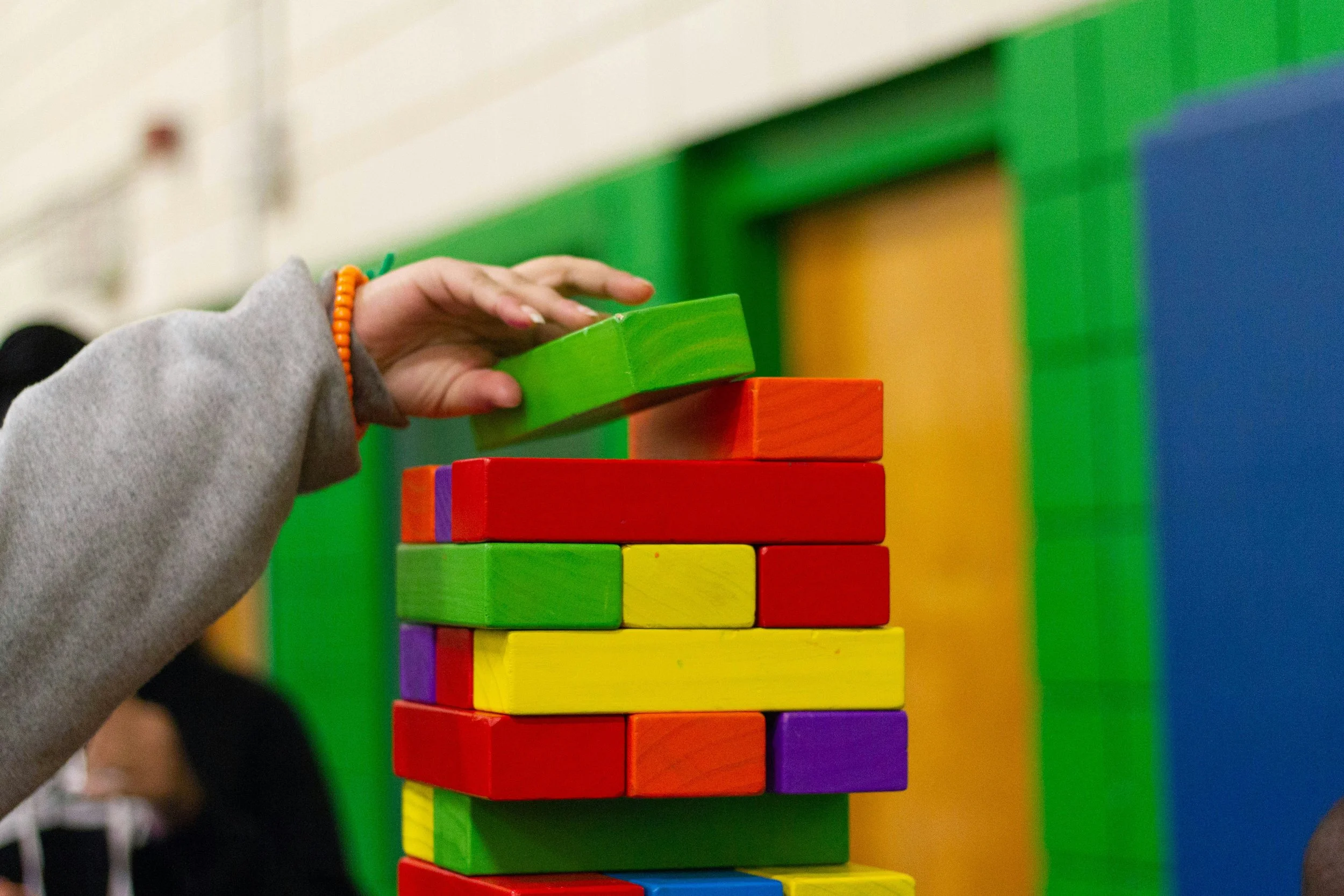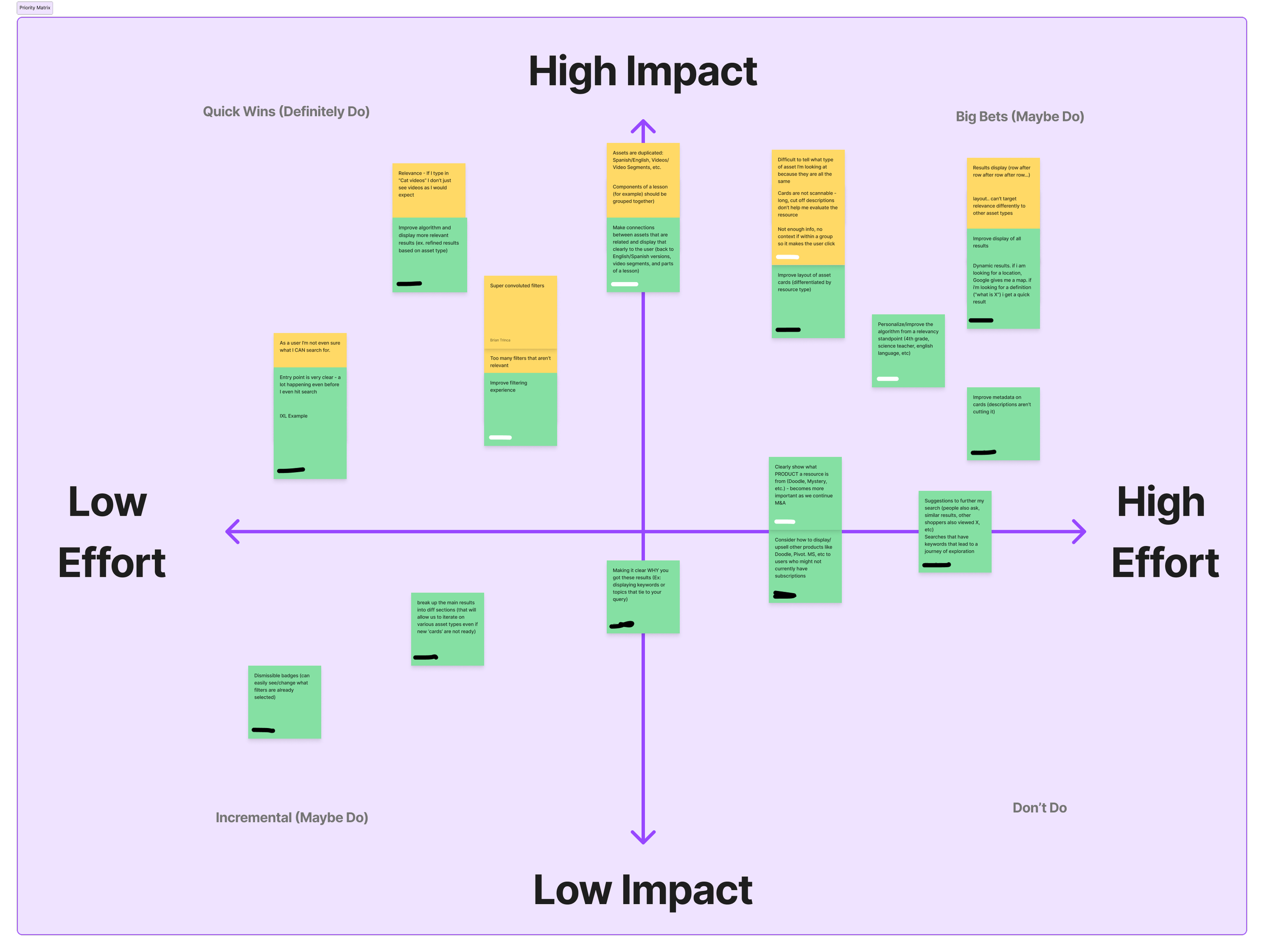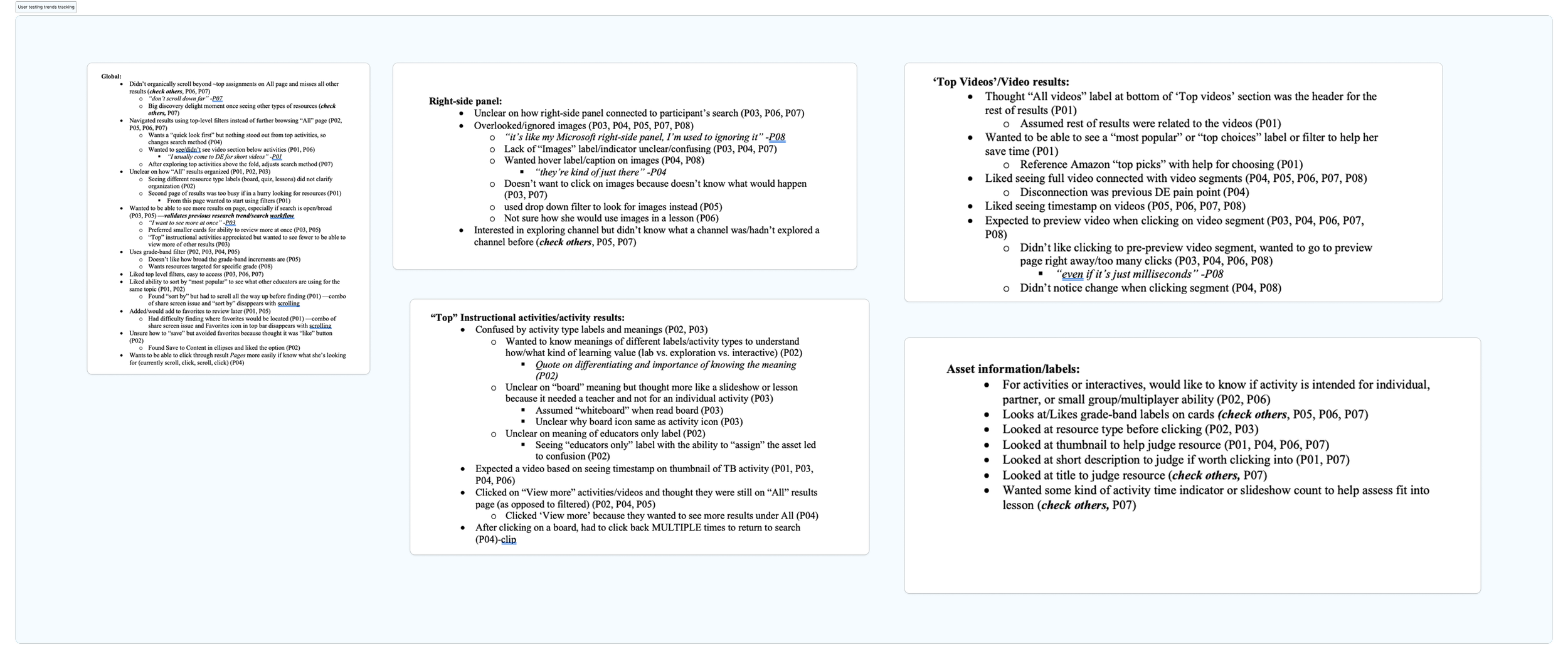
Project type: Enterprise Application // Employer: Discovery Education
Product: Discovery Experience
Discovery Education: Search & Standards Experience
Transforming search to surface the right resources, at the right time, for every teacher.
THE CHALLENGE
Discovery Education houses an extensive library of K–12 content (lessons, activities, videos, and more), but the search experience made finding the right resource difficult. Teachers described it as overwhelming and inconsistent, with too many similar results and little indication of what was most valuable or standards-aligned.
Beyond improving discoverability, we needed to rethink how search results were organized and presented. The previous one-size-fits-all card design limited flexibility and buried high-value assets beneath generic listings.
Goal: Redesign the search experience to make it smarter, simpler, and more aligned with how teachers actually plan and teach.
CONTEXT
Search is at the heart of Discovery Education’s value proposition; it’s how teachers connect classroom needs to the right digital resources. Improving it wasn’t just a UX enhancement; it was a business-critical initiative to increase daily engagement, resource adoption, and district trust in the platform’s ability to deliver high-quality, standards-aligned content.
THE BUSINESS GOALS
This release supported Discovery Education’s goal to position Experience as a daily teaching companion.
Improve daily usability and search relevance
Surface high-value, standards-aligned content
Strengthen district trust and renewal value
Build flexible design foundations for future personalization and discovery
MY ROLE
As Product Designer, I partnered with product, engineering, research, and content teams to:
Lead discovery and define teacher search behaviors
Map end-to-end “Search by Standards” and “Filter by Standards” flows
Redesign search, browse, and filtering UX
Worked closely with UX researchers to design and run usability tests with teachers, gathering insights to inform design decisions.
Collaborate on improved tagging and metadata structure
DESIGN APPROACH
The redesign focused on flexibility and clarity, creating a search system that adapts to both user intent and content variety.
Earlier versions of search relied on a rigid, one-size-fits-all card layout, which limited how results could adapt to different content types. User research showed this caused frustration and buried valuable assets.
Our solution:
Introduce modular groupings (clusters, snippets, and flexible layouts) to highlight a range of asset types across pages; not just lessons, activities, and videos on the first page.
Redesign result cards to surface the most meaningful details (grade level, standards alignment, duration); giving teachers instant context and confidence.
This flexible system ensured that teachers encountered high-value, relevant content throughout the search experience, not just at the top.
KEY UX ENHANCEMENTS
Browse by Standards: Reformatted to match each state’s structure
Filter by State Standard: Combine keyword + standards filter for precision
Refined results organization: Prioritized lessons and activities, grouped videos, and surfaced other useful assets dynamically
Improved tagging: Updated data alignment for the latest core subject standards
Design principle: Build a flexible system that delivers the best result, not just the same result, every time.
OLD PRODUCT
Discovery Education: Search results page
NEW PRODUCT
Refined results organization, filtering, card design
Priority matrix.
Purpose: To align on stakeholder perspectives around current user challenges with asset cards and search results. Ahead of our information-gathering session, we shared a short set of questions to capture honest, detailed insights that would help shape the conversation.
User testing trends tracking
Anatomy of a video card.
Search Standards snapshot






